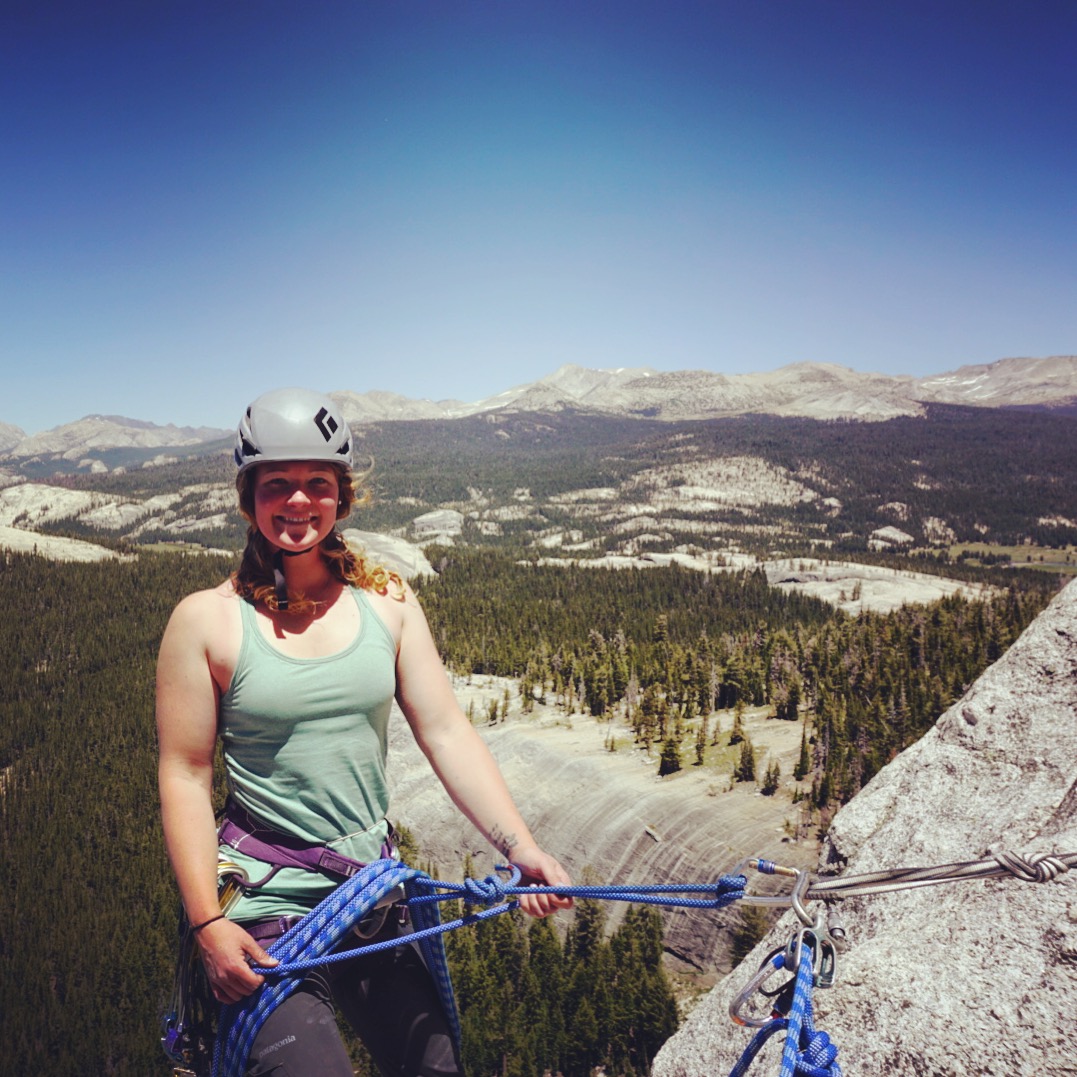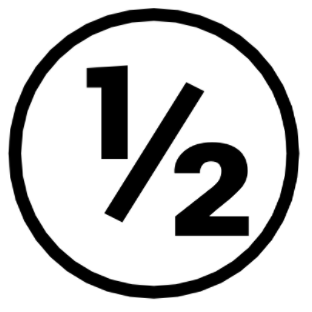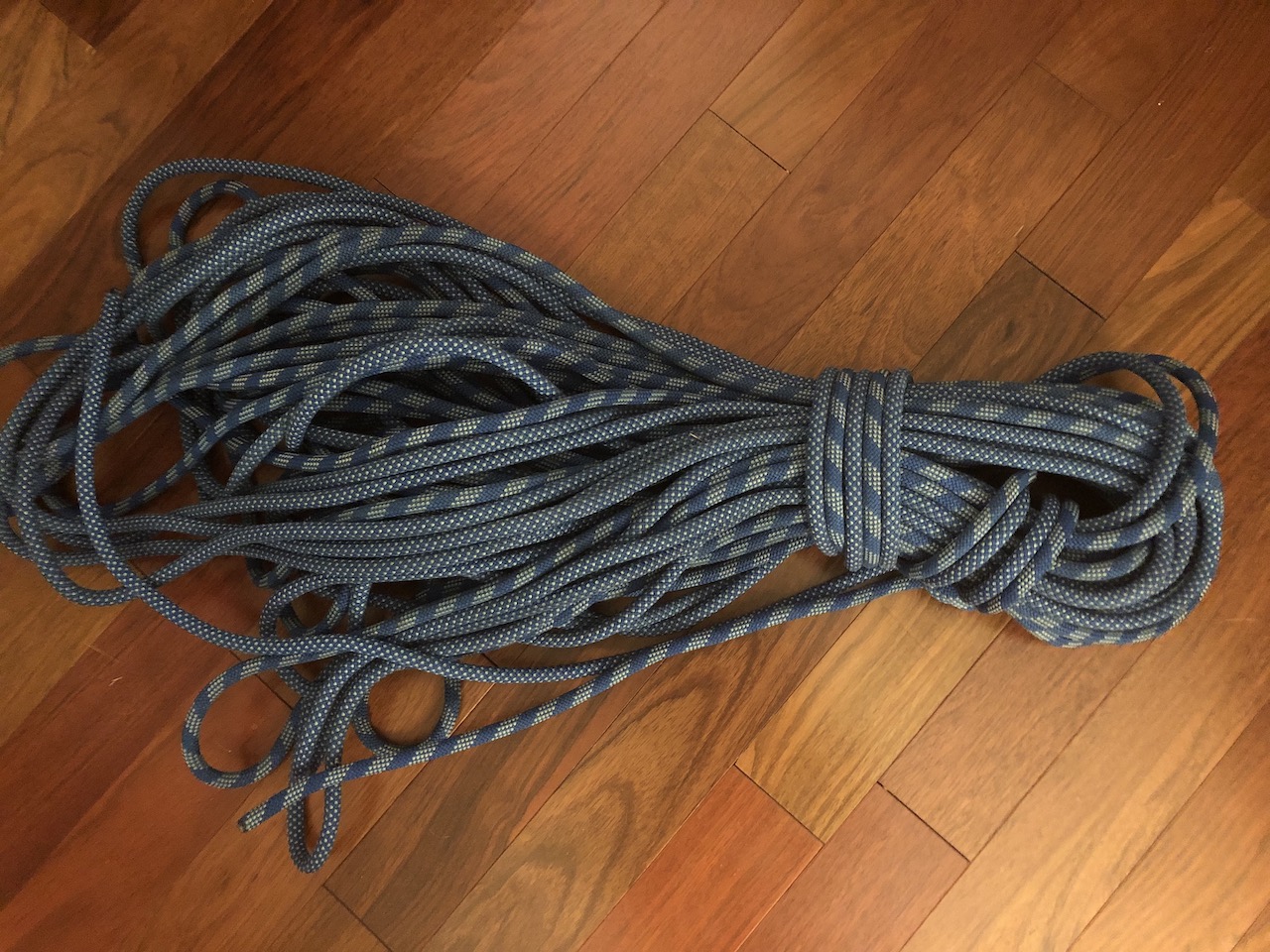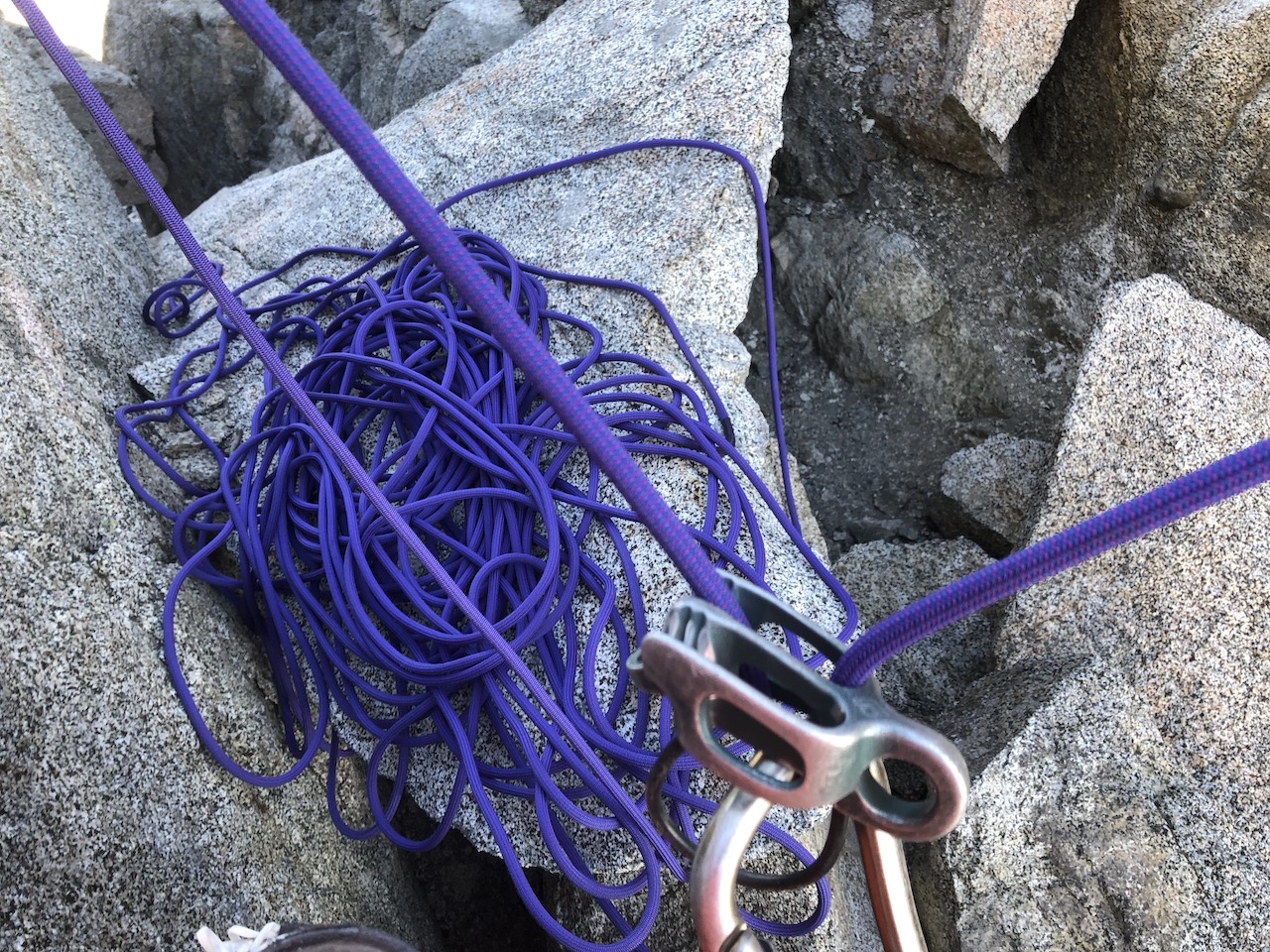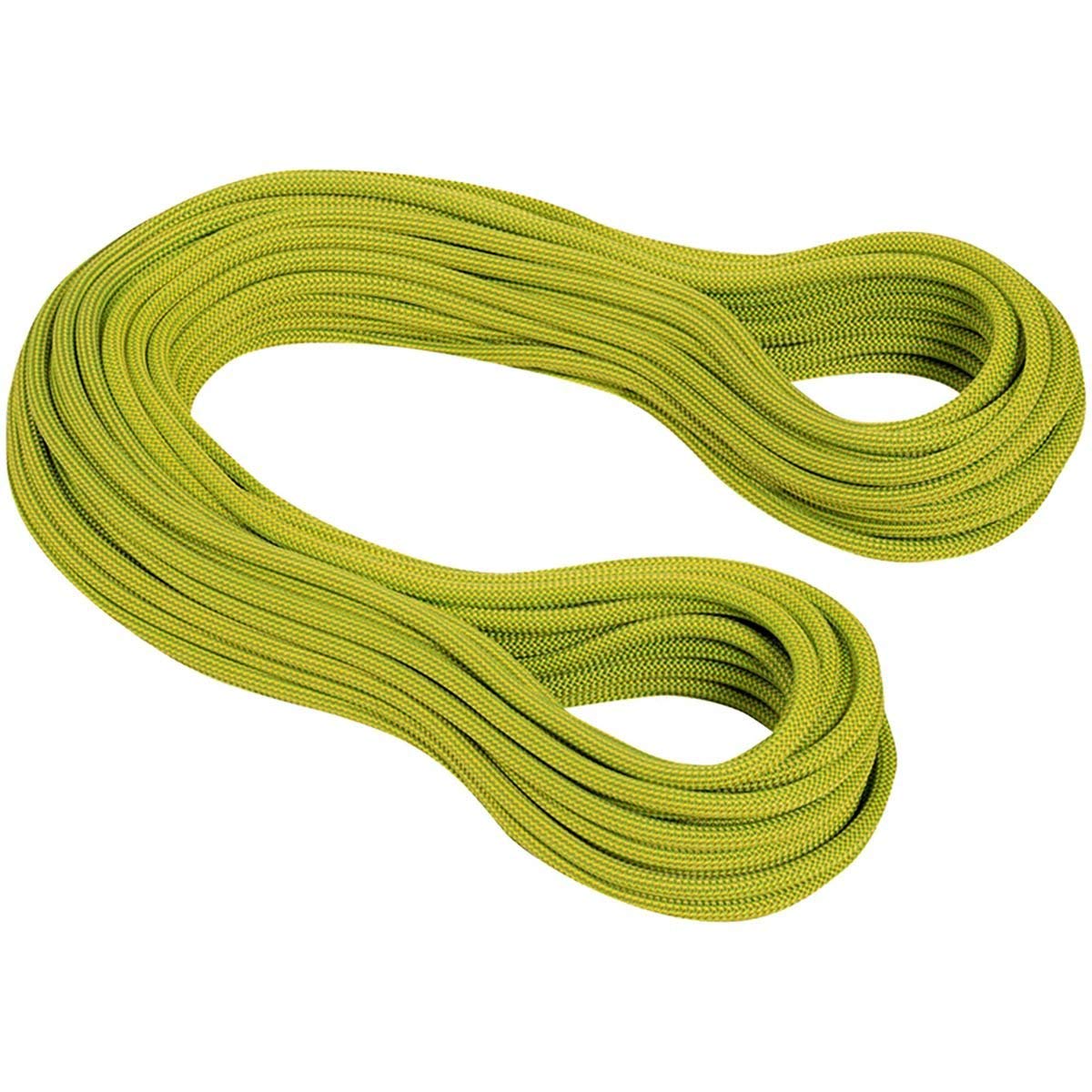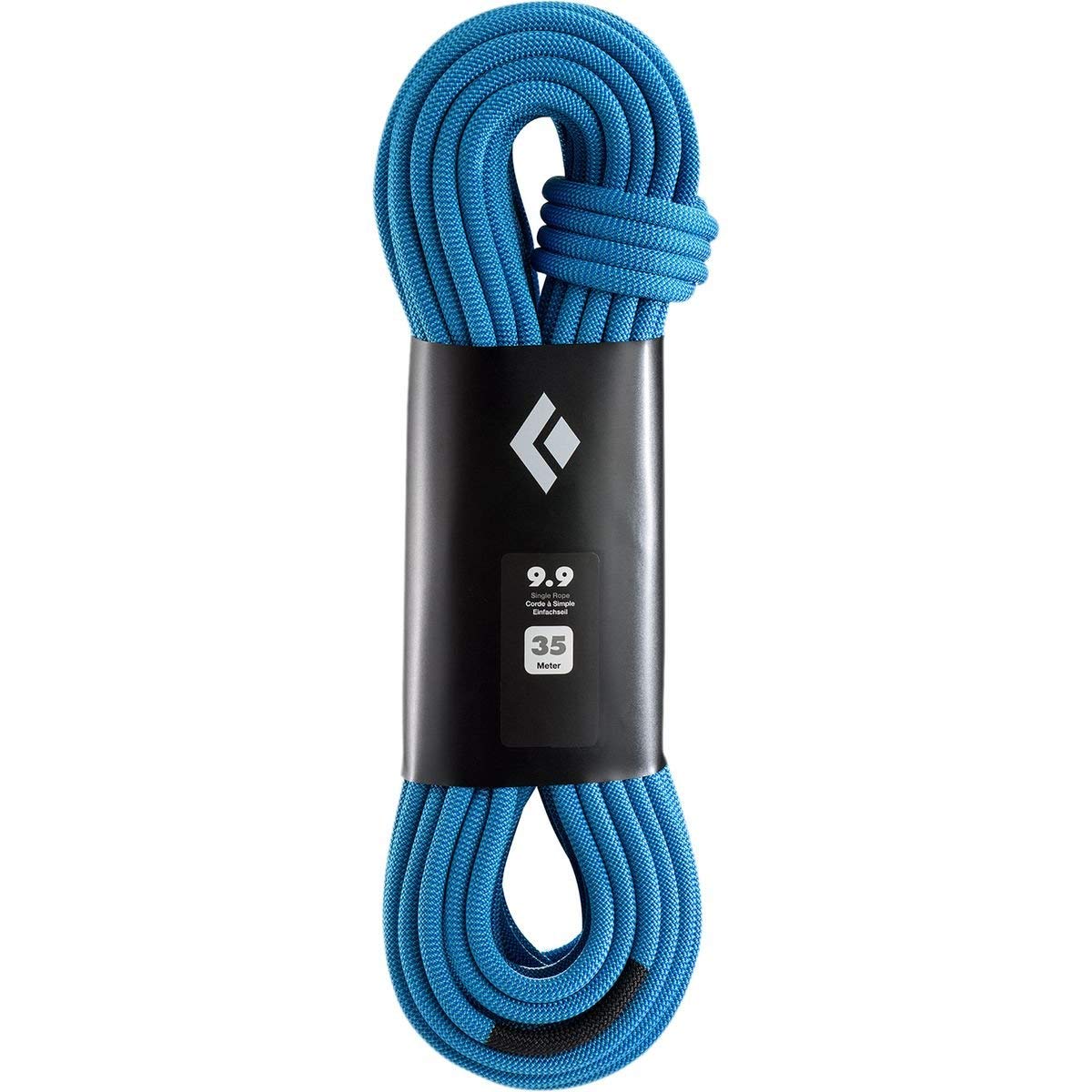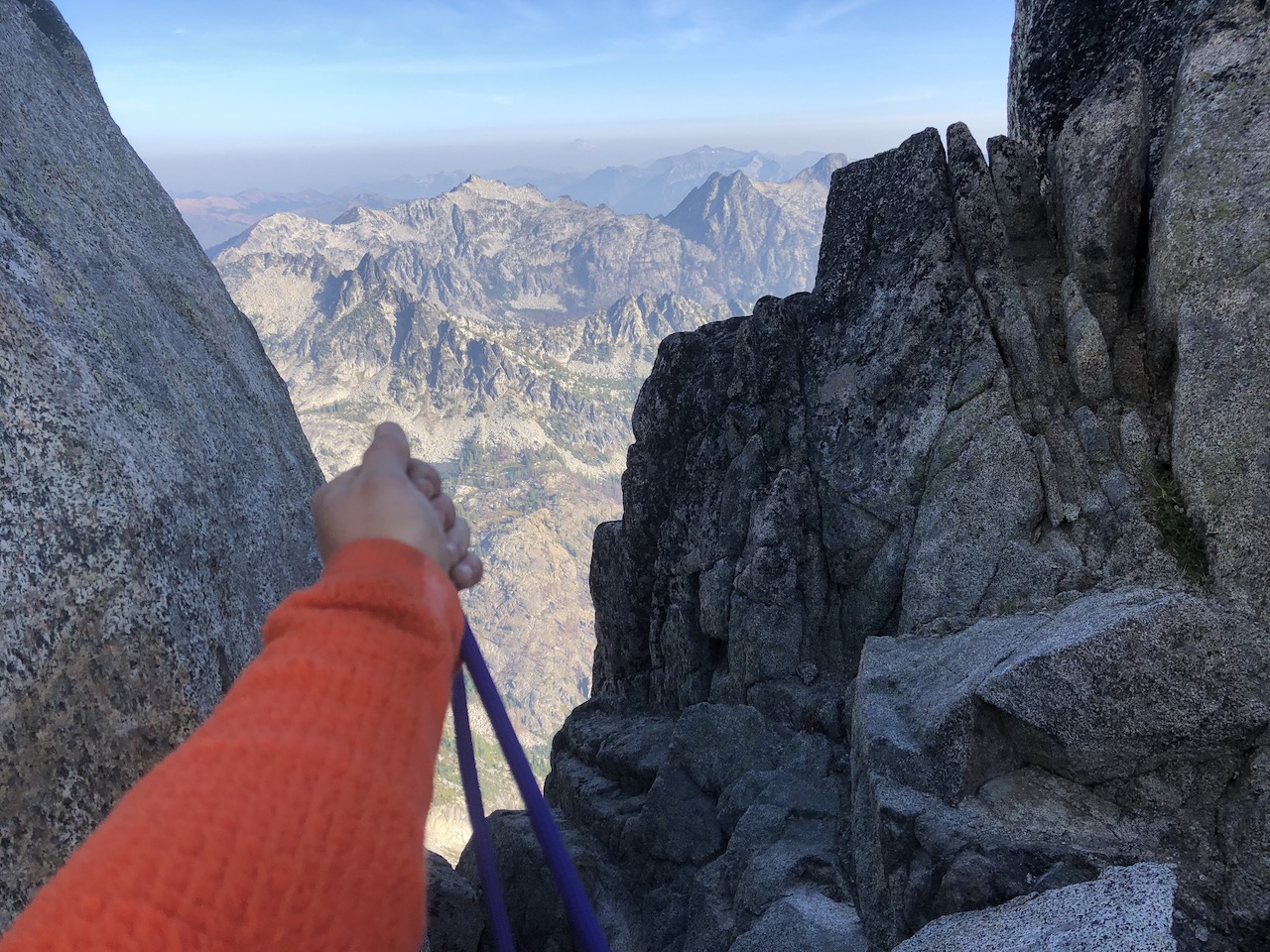Unless you free solo like Alex Honnold and enjoy living life on the edge, rock climbing requires using a rope. And I’m not talking about that hefty, hardware store rope you dug out of your garage - any old rope won’t do.
Climbing ropes are designed to keep you safe in varying situations and environments. It's necessary to understand how climbing ropes work, the different types, lengths, treatments, and which ropes are best suited for particular climbing styles.
The Modern Day Climbing Rope
Edelrid designed the first modern climbing rope in the 1960s dubbed the kernmantle, or ‘core jacket’.
The modern day climbing rope comprises two layers: the inner core and the outer sheath.
The inner core is a thick, twisted system of nylon strands that provide for a dynamic stretch when catching a fall. The sheath is made from woven nylon fibers that serve to protect the inner core.
Dynamic vs. Static
As opposed to a static rope, which does not stretch, climbing ropes are dynamic - meaning they stretch to help absorb the impact of a falling climber.
While static ropes can be used in rescue situations, for caving activities, or for hauling up loads, climbers use dynamic ropes for top roping and leading.
Tip 1
NEVER use a static rope for roped rock climbing.
Now you know that you’re going to need a dynamic rope, you’re ready to start shopping, right?
Not exactly.
The dynamic rope family includes a plethora of types, lengths, styles, treatments, and color types to choose from.
Let’s start with discussing the three different types of dynamic ropes - single, double, and twin.
Types of Climbing Ropes
Single Ropes
A single rope makes for the easiest technical system. Single ropes are rated to hold multiple falls on their own.
It’s a simple system because the climber and belayer are only managing one rope at a time.
The problem with this system is the lack of redundancy and rappelling limitations on multi-pitch climbs.
Tip 2
Single rope systems are popular for trad climbing, sport climbing, and top-roping.
Half Ropes
The half rope system involves using two ropes rated to hold a fall on their own, but not repeated falls.
The leader ties in to both ropes and alternates clipping strands into pieces of protection, making for redundancy. This can decrease rope drag on wandering routes, making it ideal for traverses.
The half rope system requires advanced rope management skills.
Advantages include the ability to mitigate wandering routes and rappel an entire rope length.
Tip 3
Half rope systems are popular for trad climbing on wandering multi-pitch rock routes, mountaineering and ice climbing.
Twin Ropes
Twin ropes are a two-rope system that together serve as a single rope. That means the leader clips both ropes into all pieces of protection.
Separately, the ropes are not rated to handle large falls, but together they provide for the same protection as a single rope. Advantages include their lightweight construction, the ability to rappel a full rope length, and the redundancy factor.
However, twin systems require more practice and rope management experience than a single rope system.
Tip 4
Twin rope systems are popular for trad climbing on non-wandering multi-pitch rock routes, mountaineering, and ice climbing.
Climbing Rope Diameter
Generally speaking, ropes that are skinnier in diameter are lighter but less durable, while thicker ropes are heavier but will outlast their skinnier counterparts.
Let’s look at the wide range of diameters offered by climbing rope manufacturers.
9.8 - 10.2 mm: These are the thickest diameter single ropes available. They’re most ideal for gym climbing, aid climbing, top roping, and in environments with rough rock, such as granite.
9.5 - 9.8 mm: This is the ideal range for an all-around single rope. They’re light, durable, and easy to handle, made for trad or sport climbing.
9.4mm: Single ropes measuring 9.4 and skinnier are ideal for long, multi-pitch and alpine climbs where weight is a priority. They’re not rated to handle as many falls as thicker ropes and are much less durable.
Half and twin ropes: Most half ropes fall between 8 - 9 mm in diameter while twin ropes are usually between 7 - 8 mm.
Climbing Rope Length
Dynamic climbing ropes generally range from 30 - 80 m in length. A 60 m rope is considered standard nowadays, although at many crags around the world climbers are setting routes with anchors that require a 70 m rope to lower back to the ground.
Check in with your local crag and areas you’ll likely be climbing before selecting a rope to buy.
Guidebooks also come in handy for this purpose, as they outline route heights and rappel distances. For climbers that travel around the world, owning both a 60 m and a 70 m rope has definite benefits.
Tip 5
A 60m single rope is considered standard and will allow you to send most climbs around the world, but check where you’re going to be climbing before you buy.
Climbing Rope Treatments
Wet climbing ropes lose up to 30% of their dynamic strength, according to manufacturers.
If temperatures are below freezing, a wet rope can also freeze, making it stiff and unmanageable.
A wet rope is also much heavier to carry than a dry rope, which can be problematic if you’re on an expedition.
Unless you’re strictly a gym rat, rock climbing is an outdoor sport and this means dealing with the elements - including rain and snow.
Modern rope brands address this issue by adding a water-repellent coating to rope fibers during the manufacturing process. This is called dry treatment - and it has more benefits than simply keeping your rope dry.
Dry treatment can reduce friction - both externally and internally - decrease rope drag, make for easier handling, and extend the rope’s lifespan.
Dry treated ropes are more expensive than non-dry treated ropes. If you’re just starting out, on a budget, or primarily sport climb, a non-dry treated rope will suffice.
If you plan on alpine climbing, mountaineering, or ice climbing - a dry treated rope is necessary.
Brands have their own proprietary names for dry treatments, but they essentially mean the same thing. Sometimes only the core or the sheath is dry-treated - so pay attention to detail while you’re shopping.
Dry treatment that includes both the core and the sheath will offer the best moisture protection.
Tip 6
Dry treated ropes are necessary for multi-pitch climbing, mountaineering, and ice climbing, and recommended for any type of outdoor climbing.
Climbing Rope Markings and Colors
Here’s where you get to what many people consider the ‘fun’ part of rope shopping. By now, you likely have an idea of the type, length, and diameter climbing rope you need.
Maybe you even have a specific brand in mind, but within specific styles there are a variety of colors to choose from - some solid and some bi-pattern. While one color isn’t better than another, there’s one thing to take into consideration: middle marks.
Middle Marks
Being able to identify the middle of your climbing rope is essential, and the easier the identification, the easier it makes rope management.
It’s important to know where the middle of your rope is so that you can quickly thread the rope before a rappel and know whether you have enough rope to safely lower a climber back to the ground.
Manufacturers traditionally accomplish this on solid ropes using a long, black coloration. The problem with this? It can wear off and quickly become hard to see on dirty or dark colored ropes.
Some companies have switched to using brighter colors in response to this issue. However, if you plan on purchasing a solid colored rope with a long smear for a middle mark, it’s certain that at some point it will become hard to see.
There are some do-it-yourself fixes you can do to make a middle mark more visible.
The first is to use a rope-specific marking pen to darken it and another is to weave thread through the outer sheath fibers.
Many climbers use unscented white dental floss, which works well, just be sure the thread doesn’t contain any kind of chemical that could potentially damage your rope.
In a pinch, such as if you’re ten rappels off the ground and can barely see your middle mark, you can use chalk to temporarily mark a rope’s middle. Alternating white stripes work best.
Be sure to reapply at each rappel station until you reach the ground, however, as the chalk will quickly wear off.
Tip 7
NEVER USE A SHARPIE to darken your rope’s middle mark! ONLY use a rope-specific marking pen, such as Beal’s rope marker. The chemicals found in sharpies and other commercial markers may or may not damage your rope’s integrity. Play it safe - it’s not worth your life.
Bi-Pattern and Bi-Color Ropes
Some ropes are constructed with two different colors or patterns that appear to join at the middle. The contrast makes it easy to identify the middle mark.
Bi-pattern ropes require more time and resources to construct, which makes them more expensive.
Pros? Your middle mark will never fade away. Also, bi-pattern ropes look really badass.
Cons? If you have to cut or repair one end of your rope by making it shorter than the other, where the bi-pattern meets will no longer indicate the middle.
Depending on how much you cut off, you may want to cut the same length off on the other side to make the ends equal, restrict its use to gym climbing or top roping, make a new middle mark and constantly remind yourself and your partner(s) where it is, or retire the rope entirely.
An Overview of Ratings
The Union Internationale des Associations d’Alpinisme (UIAA) is the governing body over climbing rope safety standards.
Dynamic climbing ropes will come with information on its test results for UIAA safety standards, including fall rating, static elongation, dynamic elongation, and impact force. While it’s not necessary to understand every variable of these terms, we’ll give you a basic breakdown.
Tip 8
Buy a rope that’s UIAA certified.
Fall Ratings
The UIAA tests ropes in a lab to determine how many falls they can hold before failing. The standard test uses an 80 kg (176 lb) weight to mirror the weight of a human body.
The test uses 1.77-factor falls as its measure, which are extremely unlikely in a real-world situation.
The UIAA has a minimum five fall requirement, but these numbers are hard to translate beyond the lab and definitely don’t offer an idea of a rope’s lifespan.
More often than not, a rope is retired due to sheath deterioration rather than reduced strength. Learn more about testing fall ratings by viewing the UIAA Safety Standards.
Static Elongation
The UIAA measures static elongation, which is how much a rope stretches while dangling a standard 80 kg weight.
According to the minimum requirements, elongation on single and twin ropes cannot exceed ten percent of the total rope length.
For half ropes, elongation cannot exceed twelve percent.
Dynamic Elongation
We’ve gone over why a rope needs to be dynamic and the UIAA actually tests this.
The UIAA measures dynamic elongation as the distance the rope stretches during the first test fall. Ropes passing the minimum requirement stretch to no more than 40 percent of their entire length.
Impact Forces
An impact force is defined as the amount of force exerted on the weight during the first test fall. It’s measured in kilonewtons (kN).
A lower number indicates a lower impact on your body, your gear, and your belayer. Dynamic elongation and impact force are inversely related, which means the higher the dynamic elongation, the lower the impact force.
The Best Climbing Rope for Every Style
There are so many brands making various collections of climbing ropes that even though you may have pinpointed what kind of rope you need, you might still be unsure which to buy.
We’ve broken down the best climbing ropes by discipline to make your decision easier.
The Best Overall Climbing Rope - Mammut Infinity Dry 9.5 mm
Mammut’s Infinity line is popular among the masses, with the Infinity Dry being the most versatile model.
It weighs 58 g/m and runs smoothly through your hands and belay devices, even after months of wear and tear. The ‘Dry’ version indicates that both the core and the sheath have been treated for water repellence.
According to Mammut, the Dry treatment also increases abrasion resistance by 50%.
The Infinity is available in a variety of colors, bi-pattern options, and either 60 or 70 m lengths. Starting at \$240 (£191), it’s definitely on the pricier side - but like we said, it’s the best of the best.
The Best Gym Climbing Rope - Black Diamond 9.9 mm
Black Diamond’s new line of climbing ropes definitely generated some buzz over the past year.
The prominent climbing brand designed the 9.9 mm diameter rope for use in the gym, ensuring soft catches and handling, and with 7.6% static elongation it’s ideal for top roping.
As it’s intended for gym use, there are no dry treatment options. It’s available in both 35 m and 40 m lengths and starts at just \$90 (£71), so is ideal for beginners and those on a budget.
The Best Sport Climbing Rope - Sterling Evolution Velocity 9.8 mm
Sport climbing often means a heavy workload, but when you’re projecting, you want a rope as light as it is durable.
The Sterling Evolution Velocity presents the best of both worlds, with a 9.8 mm diameter and a 62 g/m weight. It’s designed for all-around heavy use and is made to last.
All of Sterling’s dynamic ropes have a dry treated core, but this style lacks a dry treated sheath option. For exclusively sport climbers, however, this shouldn’t be too much of a concern.
The 60 m starts at \$200 (£160) so while it’s on the pricier end of the spectrum, it’s one of the most tried and true brands out there.
The Best Alpine Climbing Rope - Beal Joker Golden 9.1 mm
Alpine climbing’s mantra is moving light and fast. Unlike other climbing styles, every ounce counts.
When you’re alpine climbing, you’re carrying everything you need on your back from start to finish.
As opposed to sport climbing, you’re typically not pushing the grades in this kind of harsh environment - and you’re definitely not projecting. Because of this, you’re less likely to fall while alpine climbing, but that doesn’t mean you should forgo a rope.
Frequent glacial travel and ridge traverses make carrying a rope an essential measure of safety - but it doesn’t need to be as durable as a gym or sport climbing rope. Therefore, its diameter can be smaller for weight saving purposes.
The Beal Joker measures 9.1 mm and weighs 53 g/m.
The brand’s proprietary UNICORE technology means the sheath is bonded to the core, which prevents sheath stripping in the unfortunate instance of a slice.
Golden Dry treatment makes it both water and abrasion resistant, which is absolutely necessary when alpine climbing. Its small diameter limits its use, but for exclusively alpine climbing, the Beal Joker Golden is hard to beat.
The 70 m model starts at a costly \$300 (£329), but alpine environments are considered some of the most dangerous places on the planet, so it’s best to have the most suitable equipment on hand.
If you want to learn more about taking care of your climbing rope, check out the Complete Guide to Caring for Your Climbing Rope and How to Wash a Climbing Rope.
